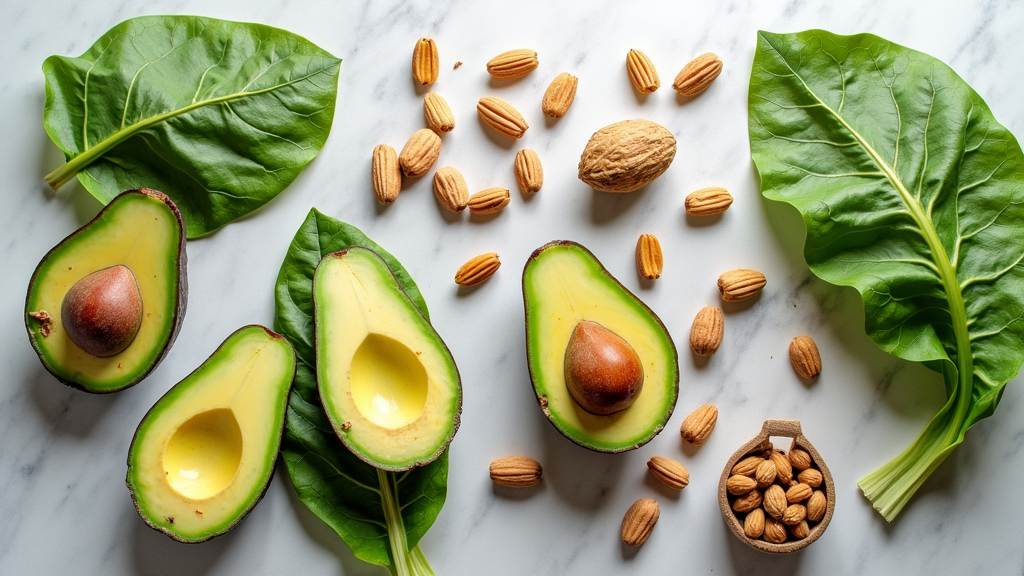Checking out the keto diet means looking closely at every part of your nutrition, and carbs are a big piece of the puzzle. Many folks often find themselves wondering about the differences between total carbs and net carbs. This article explains these terms, why they matter, and offers practical advice to help you stay on track with your keto lifestyle.

Understanding Carbs on the Keto Diet
The keto diet focuses on reducing carbohydrates so that the body can use fat for energy. This idea can seem confusing at first, especially since nutrition labels list several numbers related to carbohydrates. Knowing the difference between total carbs and net carbs helps you decide what to eat and plan meals more effectively.
Total carbohydrates represent every carbohydrate in a food, including sugars, starches, fiber, and sugar alcohols. On the other hand, net carbs are calculated by subtracting fiber and certain sugar alcohols from the total count. This subtraction is based on the concept that these components have little impact on blood sugar levels. For people following a keto diet, counting net carbs makes sense because it is the number that most directly influences ketosis.
Defining Total Carbs and Net Carbs
Before choosing a focus for your daily tracking, it is important to understand what each term means. Total carbs represent the sum of all carbohydrates in a serving of food—this includes sugars, starches, and fiber. In contrast, net carbs are derived by deducting fiber and select sugar alcohols from the total carbohydrate number because these parts do not significantly affect blood sugar levels.
For instance, if a food item contains 15 grams of total carbs and 5 grams of fiber, many keto enthusiasts count the net carbs as 10 grams. However, bear in mind that the precise calculation can vary depending on which sugar alcohols or additional ingredients are included and how they are processed by the body.
Comparing Total Carbs and Net Carbs on Keto
Understanding whether you should follow total carbs or net carbs often comes down to personal preference and experience with the diet. Each method has its advantages:
- Total Carbs: Provides a broad overview of what you’re consuming, but may overestimate the impact on blood sugar by including every carbohydrate, even those that are not fully processed by the body.
- Net Carbs: Gives a more focused look at the carbs that actually influence blood sugar and insulin levels. This focus is particularly useful when trying to maintain ketosis.
Some nutrition experts say that monitoring net carbs can lead to better results in keeping within your target range. Others, however, suggest keeping an eye on total carbs—especially if you are new to keto or your body responds uniquely to certain food types. Your choice might depend on your personal health goals, how your body reacts to different foods, and advice from your healthcare provider.
Practical Guide to Calculating and Tracking Carbs
Once you know the difference between total and net carbs, the next step is to put this knowledge into practice. Here is an easy guide to help you use these numbers when planning your meals:
Begin by examining the nutrition labels on your food. Look for the total carbohydrate number and note the fiber content. If the label includes sugar alcohols separately, you can subtract these along with fiber. The result is your net carb value. Follow these steps:
- Locate the total carbohydrates on the label.
- Subtract the grams of fiber and any specified sugar alcohols.
- The remaining number is what you can count as net carbs.
This method makes it easier to control your daily carbohydrate consumption so that you stay within a range that supports ketosis. Many on a strict keto plan aim for a net carb intake between 20 to 50 grams per day, though this can differ based on personal factors like metabolic rate and physical activity.
Keeping a food journal or using a digital app can make tracking simpler. These tools help you add up net carbs without needing to do extensive calculations every time you eat, so that you can concentrate on enjoying your meals.
Common Challenges and Misconceptions
Even armed with clear guidelines, challenges still arise when selecting foods on a keto diet. Here are some common concerns:
- Fiber Confusion: Relying solely on net carbs might make you overlook the importance of fiber, which is crucial for healthy digestion. It’s important that you include enough fiber-rich foods in your meal plan.
- Variation in Calculations: Not every food label details sugar alcohols or organizes information in the same way. This inconsistency can make it tricky to know exactly how many carbs affect your blood sugar.
- Individual Reactions: Every body is unique. While one person might manage well with 50 grams of net carbs, another may need to stick closer to 20 grams. Listening to your body is essential for adjusting your plan.
Remember, net carbs are only one part of a larger dietary picture. The overall nutritional value, calorie intake, and balance of fats and proteins all play vital roles in achieving health goals on keto.
Fiber and Its Role
Fiber is essential—even though it is mostly subtracted when calculating net carbs, it still contributes significantly to digestive health and feelings of fullness. Foods rich in fiber, like leafy greens and non-starchy vegetables, not only support a healthy gut but also help keep you satisfied after meals. Even if fiber is not counted in your carb total, its benefits in terms of nutrition remain invaluable.
Sugar Alcohols and Their Impact
Sugar alcohols such as erythritol and xylitol are common substitutes in low-carb foods and desserts. Although they add sweetness, these sugar alcohols are only partially absorbed by the body, resulting in a minimal effect on blood sugar for most individuals. However, some people may experience digestive discomfort when consuming large amounts. It is important to monitor how your body responds to these ingredients and adjust your intake accordingly.
Advanced Tips and Tricks for Keto Dieters
Once you have mastered the basics of carb counting, you might want to refine your approach. Here are some expert-approved strategies to help you fine-tune your keto meals:
Experiment with Different Foods: You may notice that some keto-friendly items don’t fit perfectly into the standard net carb calculations. Try different vegetables, dairy options, and alternative sweeteners to see how your body responds. This exploration can help you identify which foods work best for your unique needs.
Plan Your Meals in Advance: Organizing your meals ahead of time can make it easier to stay within your carb limits. Whether you use a printed meal planner or a digital app, planning helps avoid last-minute decisions that may not align with your keto goals.
Track Your Body’s Response: Since everyone’s reaction to dietary carbohydrates is different, keeping track of your energy levels and overall well-being is very important. Over time, you may find patterns in how your body responds to certain foods, which can guide your choices and help you make necessary adjustments.
Stay Informed: Nutrition science is always evolving. Keeping up with new research and expert opinions can help you experiment and adjust your eating habits in smart ways. This ongoing learning process ensures that your keto diet remains effective and enjoyable.
These suggestions let you fine-tune your diet, ensuring that you can enjoy a variety of foods while still reaping the benefits of the keto lifestyle. They also help you avoid plateaus by mixing up what you eat and consistently evaluating your body’s needs.
Implementing Total Carbs and Net Carbs in Meal Planning
Using both total carbs and net carbs as guides during meal planning offers flexibility and balance. This method encourages you to think about the quality of the food as well as the numbers on the label.
When you plan your meals, consider a variety of food groups such as leafy greens, healthy fats, and quality proteins alongside foods that are low in net carbs. A balanced plan doesn’t focus solely on carbohydrate numbers; it also ensures that you receive essential nutrients from each food group.
Preparing meals in advance using high-fiber vegetables, lean proteins, and healthy fats can help you stick to your carb limits while still enjoying diverse and flavorful dishes. By keeping a mix of ingredients on hand, you can create meals that satisfy both your nutritional needs and your taste preferences.
Frequently Asked Questions
Below are some common questions from those new to the keto lifestyle regarding total carbs versus net carbs:
Question: What is the main difference between total carbs and net carbs?
Answer: Total carbs include every type of carbohydrate present in a food, while net carbs are calculated by subtracting fiber and some sugar alcohols. Net carbs are generally considered more useful for keto dieters because they more accurately reflect the carbohydrates that affect blood sugar levels.
Question: Which should I pay more attention to on my keto diet, total carbs or net carbs?
Answer: Many keto dieters tend to focus on net carbs since they have a more direct impact on insulin and blood sugar. That said, tracking total carbs can also be useful, especially if you are new to the diet or if you prefer a broader view of your intake.
Question: How do sugar alcohols affect net carb counts?
Answer: Because sugar alcohols are not fully absorbed by the body, they usually have a minimal impact on blood sugar and are subtracted when calculating net carbs. However, individual tolerance may vary, so it’s important to notice how they affect you personally.
Question: Is it possible to exceed my carb limit occasionally and still stay in ketosis?
Answer: Occasional overages might not completely knock you out of ketosis, but consistently high carb intake can make it difficult to maintain. Balancing your daily net carb consumption is really important for long-term success.
Wrapping It Up
Whether you choose to track total carbs, net carbs, or a blend of both depends on your personal goals and your body’s reaction to different foods. The keto diet provides flexibility, and a clear understanding of the numbers behind your meals lets you make smart food decisions while still enjoying delicious meals.
Spending some time getting used to reading labels, calculating the important carb numbers, and planning balanced meals can really boost your confidence as you follow a keto lifestyle. Experiment with various strategies, monitor your progress, and most importantly, listen to your body to see what works best for you.
With a solid grasp of the differences between total carbs and net carbs, you are better equipped to navigate the many details of the keto diet. Taking charge of your nutritional strategy, adjusting when necessary, and enjoying the improved energy and overall health benefits are all part of this rewarding process. Keep learning, plan smartly, and enjoy the journey towards healthier eating.









